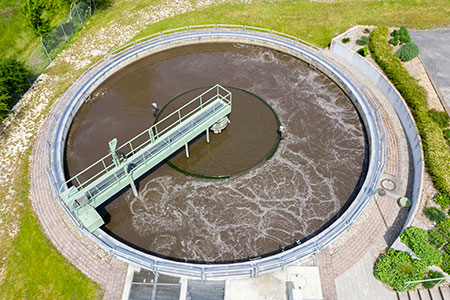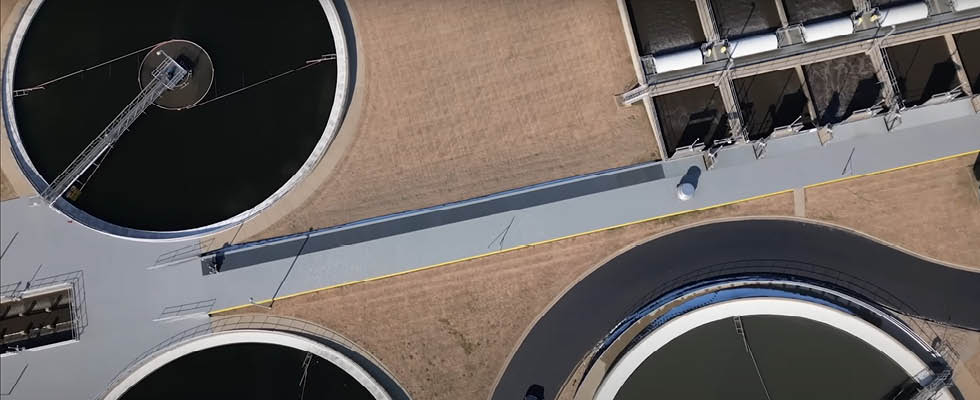
Municipal wastewater treatment infrastructure in the United States faces a dual challenge: Much of the existing equipment is aging and in need of replacement or significant upgrades, and many communities still lack adequate wastewater treatment altogether. The ramifications of these issues have direct impacts on surface water quality, public health and ecological sustainability. Addressing these problems requires determined efforts at the municipal, state and federal levels of government and the implementation of robust technologies to ensure long-term resilience.
One critical component of effective wastewater management is the return activated sludge (RAS) pump. These pumps play a pivotal role in maintaining the fragile balance of biological activities within the treatment process.

Municipal Wastewater Treatment
Municipal wastewater is the used water from residences, businesses, industries and institutions that flows into sewers. It includes sanitary sewage and in some cases is combined with stormwater. This wastewater can contain human and organic waste, nutrients, pathogens, microorganisms, suspended solids and various household and industrial chemicals. Treating wastewater before it is discharged into lakes and rivers helps mitigate risks to human health and the environment.
In primary treatment, wastewater enters a primary clarifier or sedimentation tank. There, the water is held so larger, heavier solids can settle at the bottom, while oil, grease and lighter solids rise to the surface. The settled material, known as primary sludge, is then removed from the tank using mechanical scrapers and pumps. Sometimes, this primary sludge is transported out of the facility for further treatment and reuse in various applications. Primary treatment removes only about 60% of the suspended solids from wastewater. Consequently, secondary treatment is necessary to eliminate biological matter and soluble materials that need oxygen to decompose, along with any remaining suspended solids. There are various methods for secondary treatment, with the activated sludge process being one of the most common.
What Is Activated Sludge?
Activated sludge is a mixture of microorganisms and suspended solids that metabolize and break down organic contaminants in wastewater. The process begins with wastewater and primary sludge in an aeration basin, where air is injected to help break down organic matter. Once this biological treatment occurs, the sludge is settled out in a secondary clarifier. A portion of this settled biomass, designated as return activated sludge, is then pumped back into the aeration basin to maintain a healthy and active microbial population.
Without this step, levels of settled sludge will continue to rise, eventually leading to overflow of the clarifier and a disruption in the treatment process. Continuous flow is required to keep the microorganisms alive and maximize the efficiency of the process. The RAS pump, therefore, plays a vital role in sustaining the microbial balance necessary for effective treatment.
The consequences of ineffective secondary treatment can be severe. Untreated or improperly treated wastewater can introduce high levels of nutrients such as nitrogen and phosphorus into aquatic ecosystems, leading to eutrophication.
Furthermore, pathogens and other harmful contaminants in inadequately treated effluent pose direct risks to human health, especially in communities reliant on downstream water sources. The proper functioning of RAS pumps is crucial in mitigating these risks, ensuring that activated sludge systems operate within optimal parameters and meet stringent effluent discharge standards.
The Use of RAS Pumps in Wastewater Treatment
RAS pumps are unique in that they must move large volumes of sludge with high solids content while minimizing shear forces that could damage the biological floc. This requirement places specific demands on their mechanical design. Key features typically found in effective RAS pumps include large-passage impellers, often in a two-vane or recessed configuration, which allow the passage of fibrous and stringy materials without clogging. The impellers are usually precision-cast and designed to reduce turbulence and maintain smooth flow, preserving floc integrity. Pumps with thick-walled volutes and smooth internal passages help reduce wear from abrasive materials, extending the service life of components. Pump reliability is further enhanced by the use of heavy-duty bearings and sealing systems designed for long service life under demanding conditions.

High-strength, corrosion-resistant shafts, often with renewable stainless steel sleeves, are used to handle continuous operation while simplifying maintenance. Close-coupled vertical configurations are advantageous in space-constrained treatment facilities, offering compact design and easier alignment. Additionally, features like accessible packing boxes, clean-out ports and externally adjustable impellers facilitate regular maintenance and minimize downtime.
Modern control strategies such as variable frequency drives (VFDs) are frequently employed to modulate flow rates, ensuring optimal return sludge flow while minimizing energy consumption. Remote monitoring promotes preventive maintenance and allows operators to fine-tune performance in real time and respond swiftly to changing influent characteristics. These technical considerations are essential for maintaining stable biomass concentrations, avoiding upsets in biological treatment and complying with effluent quality standards.
Due to the requirement for continuous operation and often demanding conditions, redundancy and backup systems for RAS pumps are a necessity. Wastewater treatment plants cannot afford prolonged downtime, especially in the activated sludge process, where microbial stability is key. Designing systems with adequate redundancy ensures that maintenance or mechanical failure does not compromise effluent quality. This is especially important in northern climates, where extreme weather can exacerbate equipment stress and complicate repair logistics. Proactive asset management and life cycle planning are increasingly being adopted by municipalities to address these vulnerabilities and extend the operational lifespan of critical infrastructure.
Challenges & the Future
Compounding the existing challenges are new and emerging contaminants that conventional secondary treatment methods may not adequately address. Pharmaceuticals, microplastics, endocrine disruptors and other trace pollutants are becoming increasingly prevalent in municipal waste streams. While RAS pumps do not directly remove these substances, their role in maintaining stable and efficient biological treatment supports the broader functionality of advanced treatment processes, including tertiary filtration and disinfection. As regulatory standards evolve to address these emerging threats, the importance of foundational systems like RAS pumps will only grow.
Return activated sludge pumps may not be the most visible component of a wastewater treatment facility, but they are undoubtedly among the most critical. They play a crucial role in maintaining the delicate balance of biological processes, ensuring that communities benefit from safe, efficient and environmentally responsible wastewater treatment. As the country confronts aging infrastructure, gaps in treatment coverage and the rise of new contaminants, investments in RAS systems will be key to safeguarding both public health and the natural environment for generations to come.

